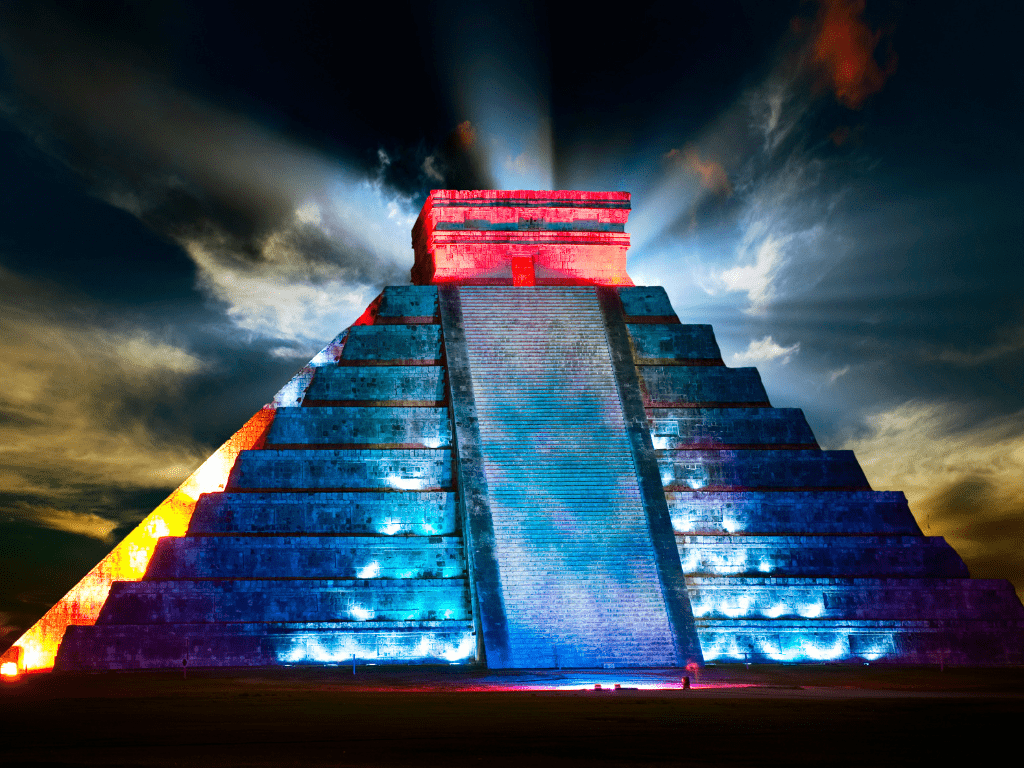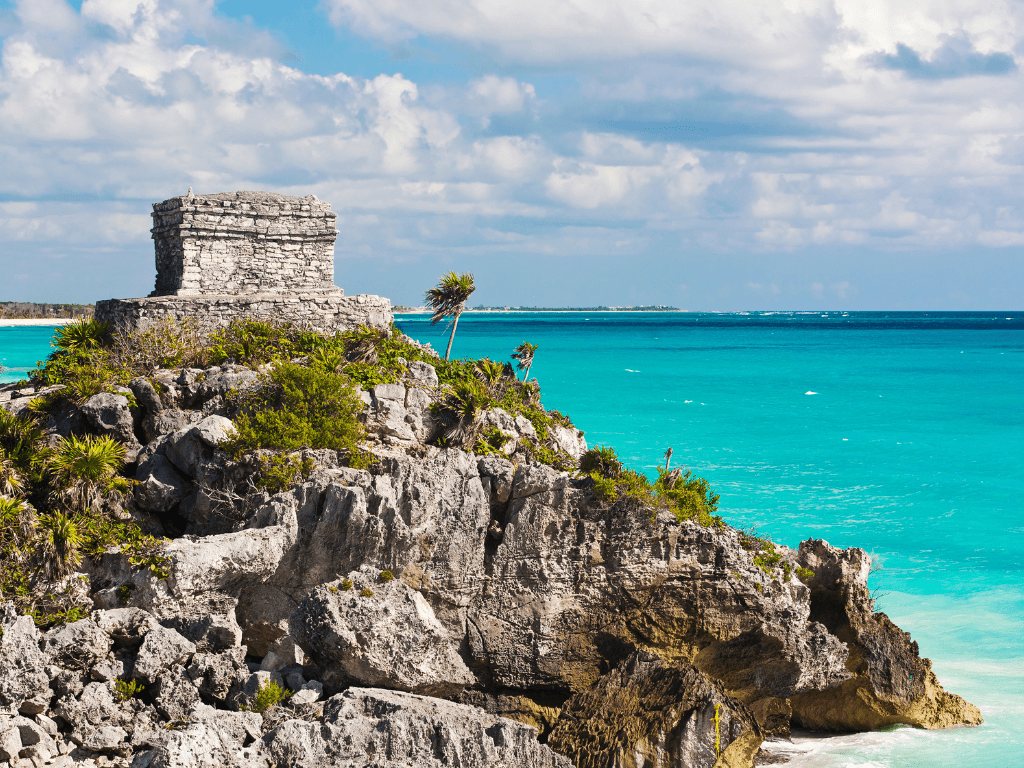Uxmal Ruins: A Window into the Art and Architecture of the Mayan World
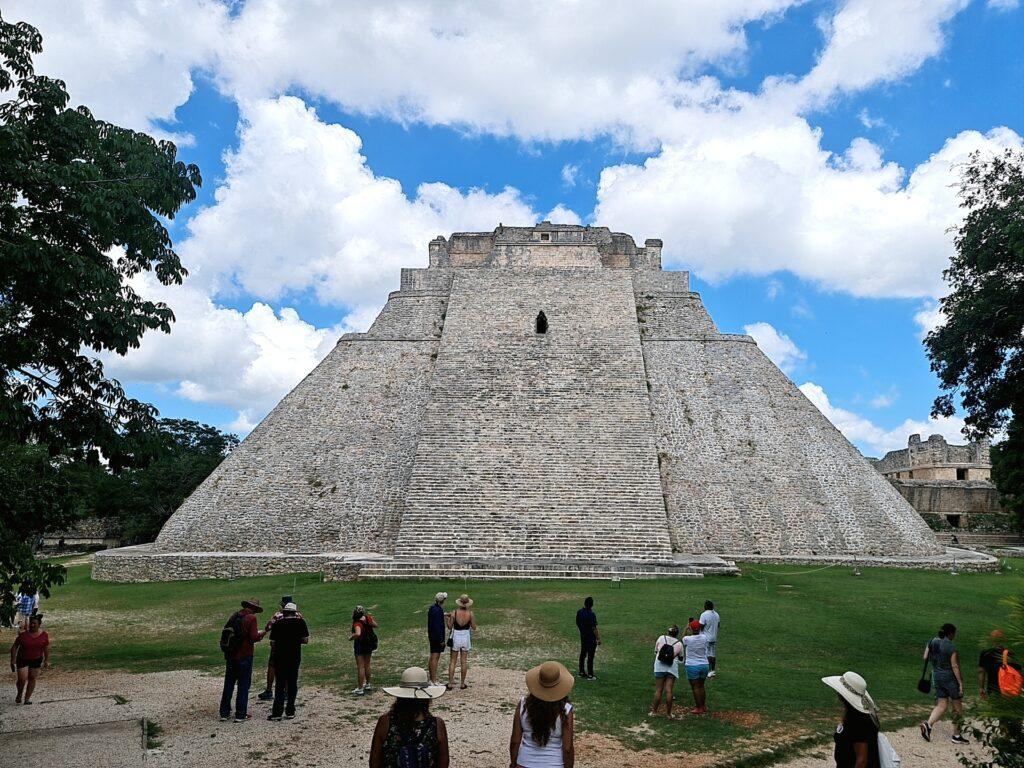
Introduction
The Mayan civilization was a complex and sophisticated society that flourished in parts of present-day Mexico, Guatemala, Belize, Honduras, and El Salvador. They developed a written language and impressive astronomical knowledge, built intricate cities with advanced infrastructure systems, and created exquisite art that still mesmerizes people today. One of the most significant remnants of this civilization is the Maya ruins of Uxmal located on the Yucatan Peninsula in Mexico.
These ruins offer a unique window into the lives of the ancient Maya people. Uxmal was once a thriving city with an impressive array of architectural wonders that showcase not only their immense creativity but also their advanced engineering skills.
Brief Overview of the Mayan Civilization
The Mayan civilization spanned over 3,000 years and was divided into several distinct periods: Pre-classic (2000 BCE – 250 CE), Classic (250-900 CE), Post-classic (900-1521 CE). During this time, they developed a complex society with a stratified system that included nobles, priests, warriors, farmers and slaves. Maya society was based around agriculture; they grew maize crops which allowed them to sustain large populations.
The ancient Maya also had remarkable achievements in astronomy; they created some of the most accurate calendars in human history. Additionally, their system of writing used hieroglyphics to record religious beliefs, historical events and astronomical observations.
Importance of Uxmal Ruins in Understanding Mayan History
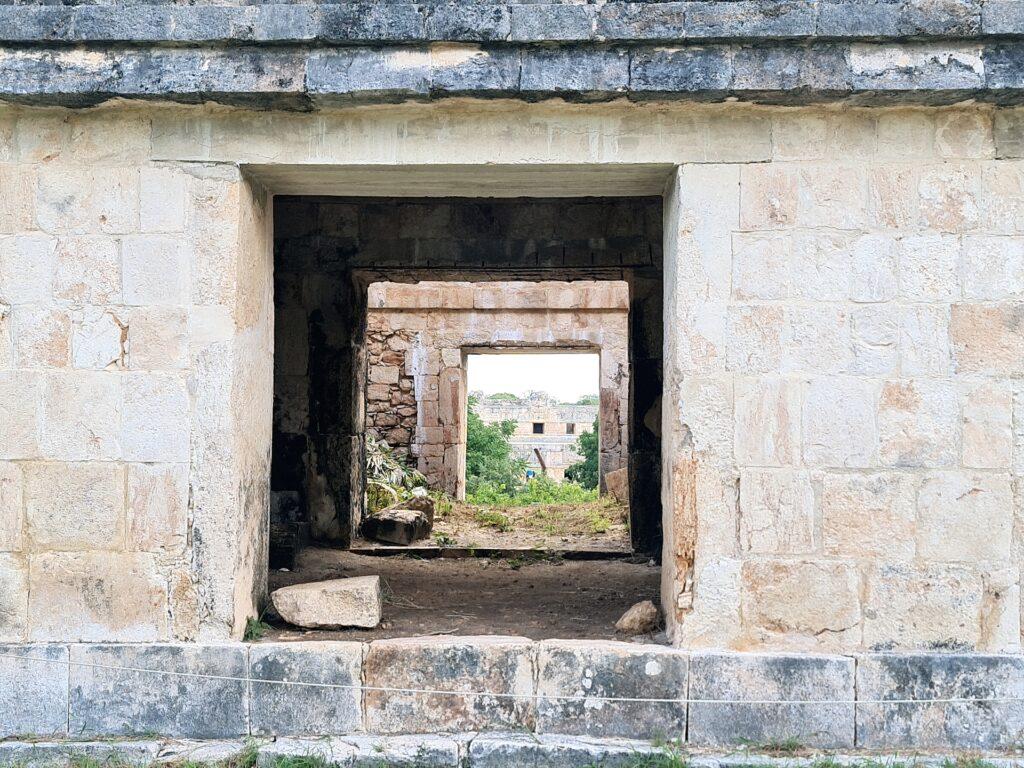
Uxmal is one of many ancient Maya sites but holds particular significance for anyone interested in understanding this great civilization further. The ruins have been extensively studied by archaeologists who have uncovered an array of information about life at Uxmal during its peak between 600-1000 CE. One significant aspect revealed by researchers is that Uxmal’s architecture reflects its social hierarchy.
The largest and most impressive buildings were reserved for the ruling elite, emphasizing the social stratification of Maya society. The ruins also hold clues about the religious practices of the ancient Maya people, including how they conducted sacrifices and other rituals.
Thesis Statement: Uxmal Ruins Offer a Unique Insight into the Architecture, Art, and Culture of the Mayan Civilization
Uxmal’s ruins provide an unparalleled opportunity to explore and understand Mayan culture through its art, architecture and daily life. By examining structures like the Pyramid of the Magician or Governor’s Palace, we can learn more about their engineering skills, design principles and religious beliefs.
Additionally, studying art forms like carvings or murals gives us insight into Mayan artistic expression that still captivates audiences today. With such a rich history to draw from, exploring Uxmal is a remarkable experience that highlights why Mayan civilization endures as one of history’s great cultural achievements.
History of Uxmal Ruins

Uxmal is an ancient Maya city located in the Yucatan Peninsula, Mexico. It was founded around 500 AD and reached its peak during the Late Classic Period (900 to 1100 AD).
The city had a significant role in the Mayan world due to its location at the junction of trade routes between the Caribbean coast and Central America. The city’s prominence also gave it political power among other Mayan cities, evidenced by its alliances with other influential cities such as Chichen Itza.
Location and Significance of Uxmal in the Mayan World
The location of Uxmal was strategically placed near important trade routes, allowing it to become a center for agriculture and commerce. It also had access to limestone quarries nearby that allowed it to construct some of its impressive structures.
In addition to its economic importance, Uxmal was also a religious center with several temples dedicated to various gods. These temples were not only used for religious ceremonies but also as places where rulers could legitimize their power through ritual performances.
Timeline of Construction and Occupation
The construction of Uxmal can be divided into three phases: Early Classic (500-700 AD), Late Classic (700-1000 AD), and Postclassic (1000-1200 AD). During these periods, many important buildings were constructed including the Pyramid of the Magician, Nunnery Quadrangle, Governor’s Palace, Great Pyramid, and Ball Court among others.
The end of occupation at Uxmal remains somewhat mysterious but is believed to have occurred sometime during the late 1200s or early 1300s following a period of decline marked by abandonment of some areas within the site. In particular cases like Central Mexico where the Spanish conquest was the cause of the fall of those civilizations, there is no significant evidence suggesting this was also true for Uxmal.
Theories About Why Uxmal Was Abandoned
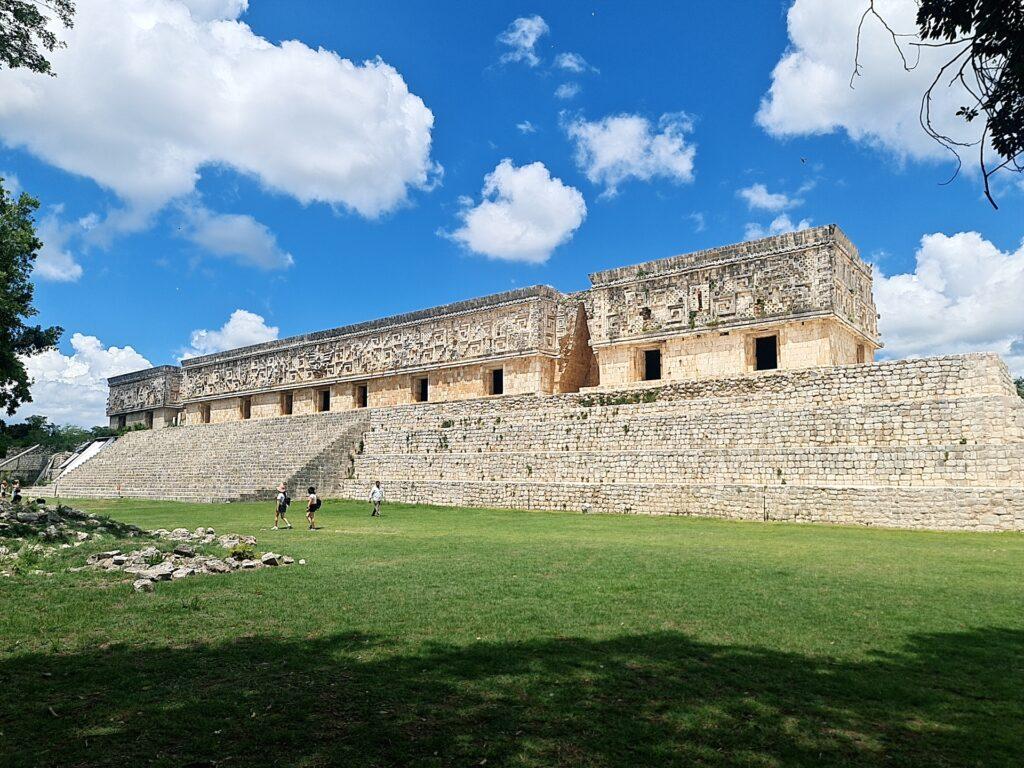
Many theories have been proposed to explain why Uxmal was abandoned. One theory suggests that ecological degradation due to overpopulation and deforestation led to a decline in agricultural productivity, which caused a food shortage in the region. Another theory suggests that political instability and internal conflicts among the ruling elite led to its abandonment.
It is also believed that environmental factors such as droughts may have contributed to its decline. Despite this mystery, many researchers agree that Uxmal represents an important chapter in Mayan history and provides valuable insight into their civilization’s culture and architecture.
Architecture at Uxmal
Overview of Architectural Styles Used in Mayan Construction
Mayan architecture is known for its use of unique and innovative building techniques, which were developed over centuries. One of the most distinctive features of Mayan architecture is the use of corbelled arches, which allowed Mayan builders to span large distances without the use of columns or beams. Another notable architectural feature is the use of stucco to create intricate designs and sculptures on building facades.
Description of Notable Structures at Uxmal
The Pyramid of the Magician, also known as the Pyramid of the Dwarf, is one of the most recognizable structures at Uxmal. It was built in several stages between 600-1000 CE and stands approximately 35 meters tall.
The Governor’s Palace, another notable structure, is a complex that includes multiple buildings constructed over several centuries. The palace features detailed carvings and sculptures that depict ancient Mayan gods and scenes from daily life.
Analysis of Architectural Features that Make Uxmal Unique
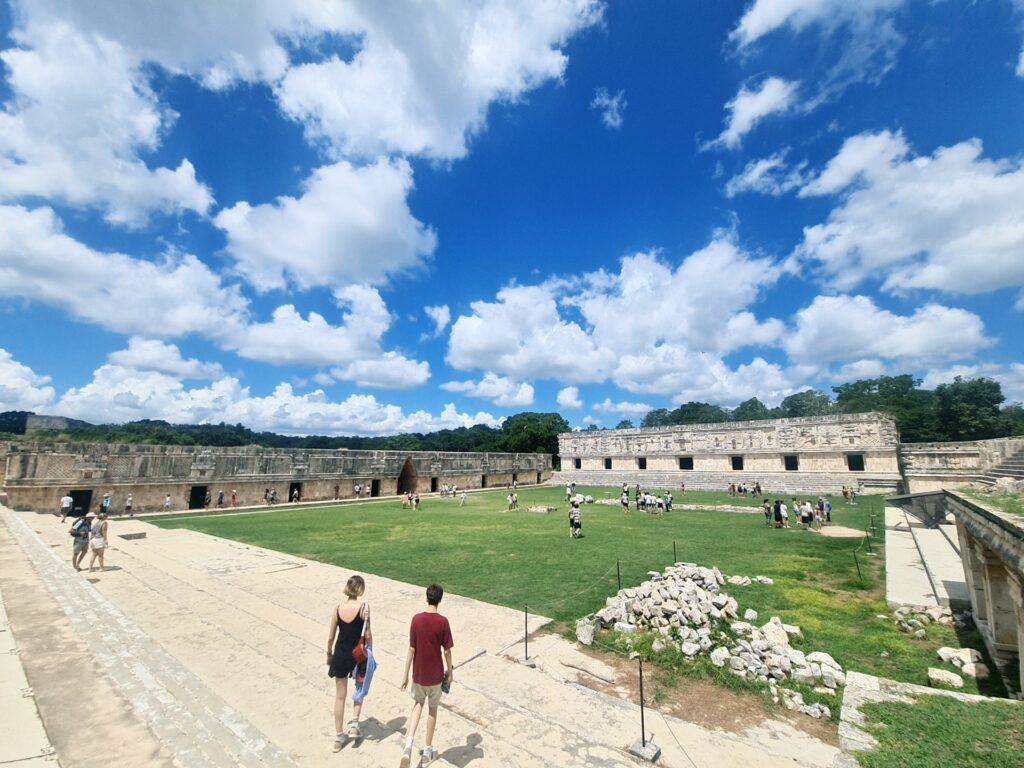
Uxmal’s unique architectural style is known as Puuc architecture. This style features smooth walls with ornate decorations made from limestone slabs called chinked mosaics. The Palace of the Governors exemplifies this style with its intricate mosaic facade featuring geometric patterns and images of gods and animals.
Another characteristic feature of Puuc-style buildings are their steep roofs with triangular gables decorated with masks or other designs. The combination of corbelled arches, stucco decoration techniques, and Puuc-style architecture makes Uxmal a remarkable example not only within Maya civilization but within world architecture as well.
Artistic Expression at Uxmal
Overview of Mayan art and symbolism
Mayan art is known for its intricate designs, bold colors, and detailed carvings. The art was often used to convey spiritual and religious beliefs, as well as to document important events in Mayan history.
The symbols used in Mayan art were often derived from nature, with animals such as jaguars and birds being commonly depicted. Many of these symbols were believed to have magical powers or to represent different aspects of the gods.
Description and analysis of artistic elements found at Uxmal (e.g., carvings, murals)
Numerous examples of Mayan artistic expression can be found throughout the ruins at Uxmal. Stone carvings on buildings such as the Governor’s Palace depict mythological creatures and scenes from daily life. These carvings are highly detailed, with intricate patterns and textures that reflect the skill of the craftsmen who created them.
The murals at Uxmal are another example of Mayan artistic expression. These colorful paintings depict scenes from everyday life, such as hunting or farming activities.
Discussion on how art reflects cultural beliefs and practices
Mayan art was an integral part of their culture, with many pieces having significant religious or spiritual meaning. For example, some carvings were believed to have protective powers or to represent various gods who governed different aspects of life.
Additionally, many murals depicted scenes that were important in daily life, such as agricultural activities or religious ceremonies. Through studying these works of art at Uxmal ruins we gain insight into cultural beliefs about religion, spirituality, social order, agriculture trade, military values, ethics , morals etc.
Daily Life at Uxmal
Living in Ancient Times
The Mayan civilization was one of the most advanced and sophisticated ancient civilizations, with a rich history and culture. Daily life in Uxmal was centered around agriculture; people grew crops such as maize, beans, and squash, which formed the bulk of their diet.
They also hunted and fished to supplement their diet, while the wealthy elites enjoyed a more varied diet that included chocolate, honey, and other luxury foods. The city had a complex social hierarchy with the king at the top followed by nobles who held positions as administrators or soldiers.
Architecture for Living
The architecture at Uxmal was designed to provide comfortable shelter from the hot climate. Houses were generally single-story structures built around a central courtyard or patio.
The walls were made of limestone blocks quarried from nearby hills that provided excellent insulation against heat and cold. The roofs were flat and made of wooden beams covered with thatch or palm leaves.
Religious Beliefs And The Daily Routine
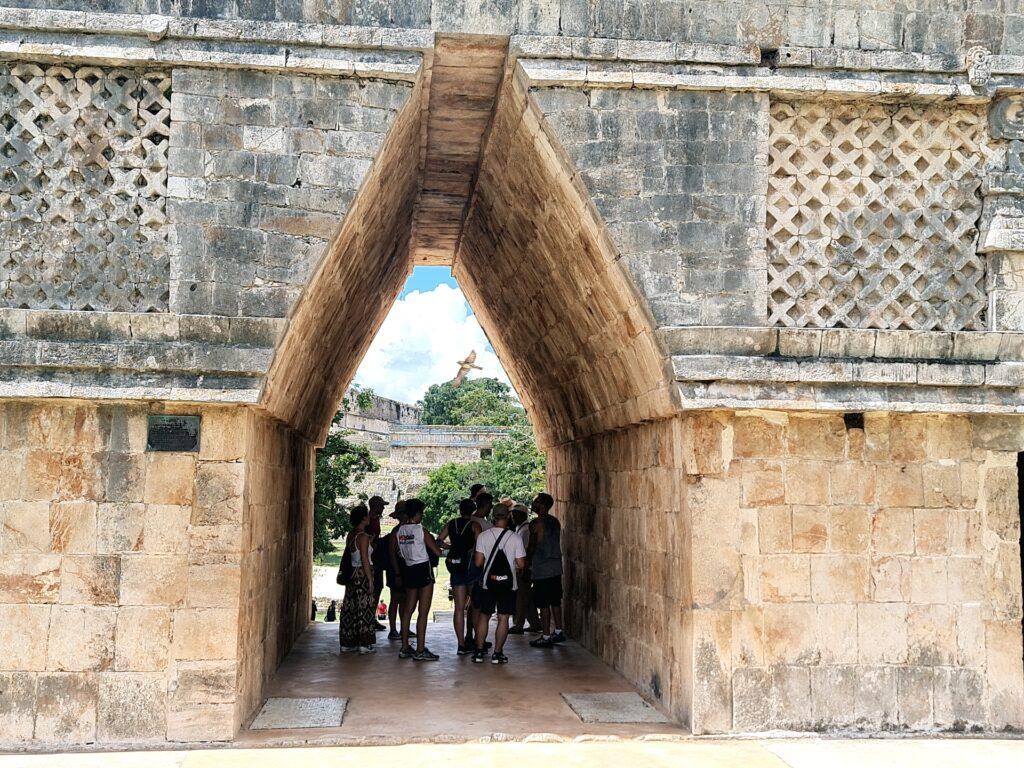
The Mayans were deeply religious people who believed in many gods who controlled every aspect of their lives. Their daily routine revolved around religious ceremonies that honored these gods through offerings of food, drink, flowers or burning incense. Priests played an important role in society; they conducted religious ceremonies but also acted as doctors.
Conclusion
Uxmal ruins offer an unparalleled glimpse into the fascinating world of ancient Mayan civilization. From its unique architectural style to intricate artwork to daily life practices- there is much to discover and appreciate about this incredible site! Though this once-great civilization no longer exists today, we can still marvel at their achievements through artifacts like those found at Uxmal ruins which give us insights into how they lived on a daily basis.The beauty of Uxmal and the magnitude of its history should be revered and preserved so that future generations can continue to learn from it. Please keep in mind the Yucatan is scattered with Mayan ruins. Check out our list of the 8 most important Mayan ruins.

